Persuasive Writing Teaching Resources
Explore persuasive writing topics, activities and more — aligned to the Common Core curriculum and created by teachers for your elementary or middle school classroom!
Whether you're introducing this text type for the first time to your kindergarten or 1st grade, or you're teaching upper elementary students to build their powers of persuasion, this collection of teaching resources will help you save time on your lesson plans so you have more time to spend doing what you really love — engaging with your students!
Best of all, each printable worksheet and interactive game has undergone careful review by a member of the Teach Starter team to ensure it's ready for your classroom and your students!
Are you new to teaching persuasive writing, or are you just looking for fresh ideas and tips on the topic? Read on for a primer from our teacher team!
What Is Persuasive Writing? A Kid-Friendly Definition
If you're introducing this type of writing to your students, a definition may come in handy. Try this one from our teacher team!
Persuasive writing is a type of writing that we use to convince a reader to adopt a particular viewpoint or do a certain thing.
This writing type uses persuasive techniques to present the reader with logical arguments, supporting evidence and emotional appeals to help convince them.
Persuasive Writing Examples for Kids
Examples of persuasive writing from some of their favorite children's books can also be helpful when you're launching your writing unit.
Some of our teacher team's favourites for doing just that include
Popular children's books often provide excellent examples of persuasive writing perfect for young kids. Here are a few examples:
- Click, Clack, Moo: Cows That Type by Doreen Cronin — The cows on a farm use persuasive writing techniques to demand electric blankets from the farmer by leaving notes in this silly book from author Doreen Cronin. The cows argue that they deserve the blankets for their comfort and better milk production.
- The Three Little Pigs — This classic fairy tale is a great example of persuasive writing that many students will already know, even if they don't realize it contains persuasive devices.
- Click, Clack, Peep! by Doreen Cronin — Yes, it's another book from Cronin that works well for teaching persuasive writing! Instead of cows writing, however, the persuasive arguments in this tale come from ducklings who convince the farm animals to join them in disrupting Farmer Brown's sleep. The story showcases the ducks' ability to influence and rally others.
- My Lucky Day by Keiko Kasza — In this silly story, a clever pig uses persuasive tactics to convince a hungry wolf that it would be a better meal if it were fattened up first.
- I Can't Believe You Said That! by Julia Cook — This book focuses on the importance of using persuasive language in a respectful manner and makes a great example for teaching your class how to express their thoughts and opinions without hurting others' feelings.
Persuasive Writing Structure
Students will need to learn the basic persuasive writing structure to give shape to their arguments. While there can be some variation, persuasive writing typically follows a clear and organized framework in order to effectively present arguments and convince the reader.
The most popular structure is typically as follows:
- Introduction — The writer should grab the reader's attention and provide an overview of the topic or issue at the beginning of their essay, speech or other piece of persuasive writing. A good introduction will include:a. Hook or Attention-Grabbing Opening — This is a compelling statement, question or fact that captivates the reader's interest.
b. Background Information — Brief context or background information about the topic will help the reader understand the subject matter.c. Thesis statement — This is a clear and concise statement that presents the writer's main argument or position.
- Body Paragraphs — The body paragraphs form the core of a persuasive essay, and this is where students can present supporting evidence, reasons and counterarguments. Each body paragraph typically focuses on a single point or supporting argument and follows a consistent structure:a. Topic Sentence — This is a clear statement that introduces the main idea or argument of the paragraph.
b. Supporting Evidence — Strong persuasive writing uses examples, statistics, expert opinions or anecdotes to strengthen the argument.c. Explanation and Analysis — Each body paragraph should have a sentence or two connecting the evidence to the main argument and explaining how it supports the thesis statement.
- Conclusion — In the final section of a persuasive essay, students should wrap things up by restating the thesis statement, summarizing the main points and leaving a lasting impression on the reader. A strong conclusion includes:a. Restatement of the Thesis — This reaffirms the main argument or position from the introduction.
b. Summary of Main Points — Students should briefly summarize the key supporting arguments or evidence presented in the body paragraphs.c. Closing Statement — The end should leave the reader with a thought-provoking or impactful final statement, a call to action or a suggestion for further consideration.
Persuasive Writing Techniques
Are you looking for some strategies to share with your students to make their writing more convincing and compel the reader? Let's take a look at some of the persuasive writing techniques they can use!
- Appealing to the Reader's Emotions — Using language and storytelling techniques to evoke strong emotions in the audience — such as fear or empathy — can be a strong way to persuade a reader to act.
- Using Repetition — Repeating key phrases or ideas throughout an essay or letter will help reinforce their importance and make them memorable.
- Asking Rhetorical Questions — Asking questions that lead the audience to a desired conclusion can make them think about the topic and engage with the argument.
- Relying on Authority — Citing credible experts or sources is a technique that lends credibility and support to the writer's claims, making it more appealing for a reader.
Fun Persuasive Writing Activities for the Primary Classroom
This collection of ELA resources is full of fun activities to engage your students with persuasive writing, but we didn't stop there.
Take a look at some more fun activities to do with your class!
- Create persuasive posters with your 2nd grade class that include simple slogans and visuals to convince others to join a school extracurricular activity or club.
- Set up a debate for your 3rd grade students, brainstorming an either/or concept that students feel strongly about (such as a type of fruit). Split the class in two, and have the two groups of students debate the topic, attempting to convince the others. This could also be done in small groups or even in pairs.
- Challenge your 4th grade students to write a letter convincing you to wear a silly costume to school. If you have a school or classroom mascot, they might try to convince you to dress like the mascot!
- Ask students to take a stand on which season is better: summer or winter.
- Pretend you have $1 million to give away, and challenge your 6th graders to a quick write, explaining why they deserve the money.
- Plus Plan
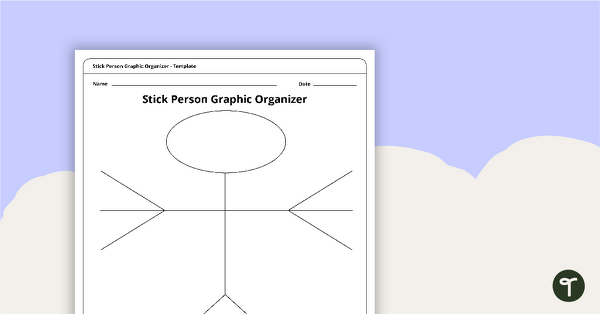
Stick Person Graphic Organizer
A simple and effective graphic organizer that can be used for a wide range of purposes including note taking, mind mapping, and planning writing responses.
- Plus Plan
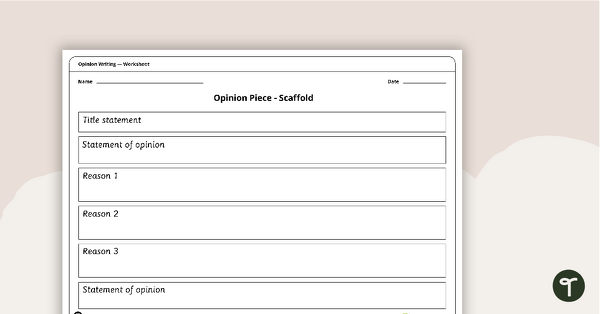
Simple Opinion Pieces - Writing Scaffold
A simple scaffolding worksheet to use when writing opinion pieces.
- Plus Plan
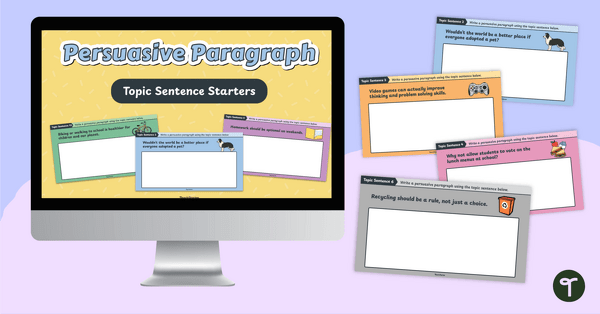
Persuasive Paragraph Topic Sentences – Digital Template
Unlock persuasive paragraph starters with this ready-to-use slide deck designed to inspire confident, well-structured writing.
- Plus Plan
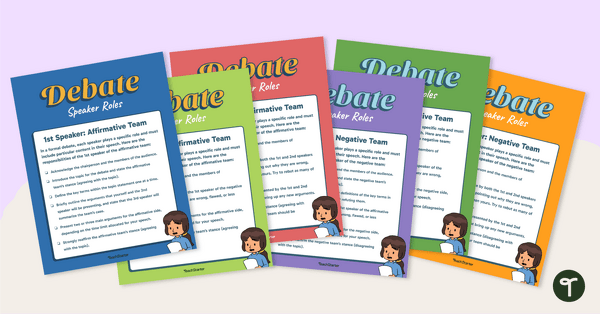
Debate Speaker Roles Poster Pack
Download and display these colorful classroom anchor charts that clearly explain every debate speaker role for each member of a debating team.
- Plus Plan
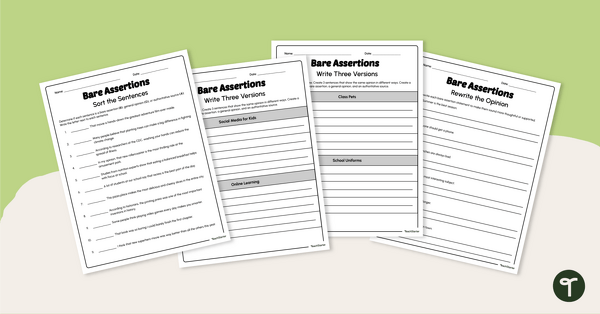
Bare Assertions Worksheet Pack
Strengthen student writing by helping them turn a bare assertion into a well-supported opinion using these engaging and practical worksheets.
- Plus Plan
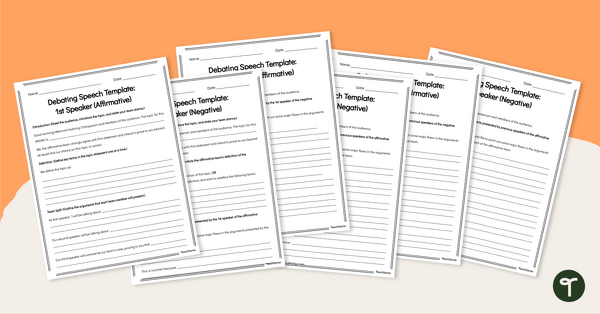
Debate Speech Template Pack
Support student success with a debate speech template that guides them through writing and delivering persuasive speeches in every debate role.
- Plus Plan
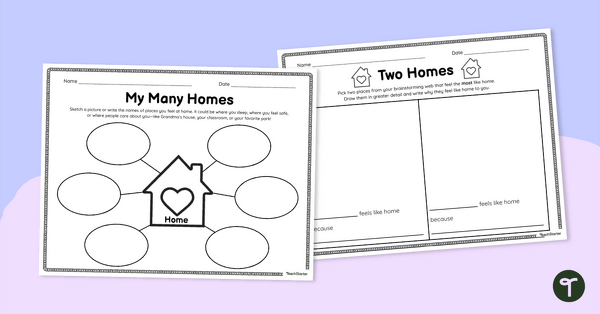
My Two Homes Activity
Use this “My Two Homes" activity to explore diverse family structures and encourage students to explore all the places they can call “home.”
- Plus Plan
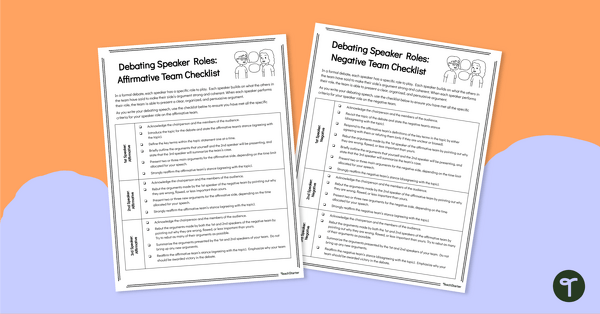
Debate Team Roles Checklists
Support students to understand debate team roles with this clear speech-writing checklist designed to guide each speaker through their responsibilities.
- Plus Plan
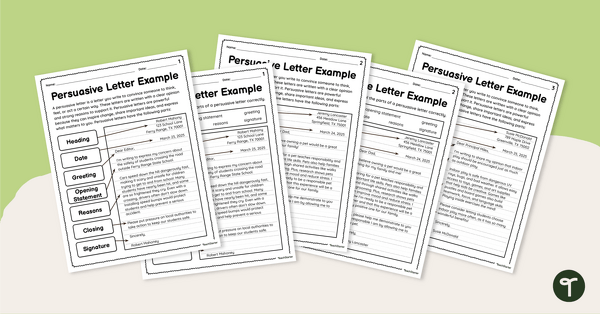
Persuasive Letter Example Pack
Download this persuasive letter example set featuring five model letters with labeled and unlabeled versions, perfect for teaching students the structure of a persuasive letter.
- Plus Plan
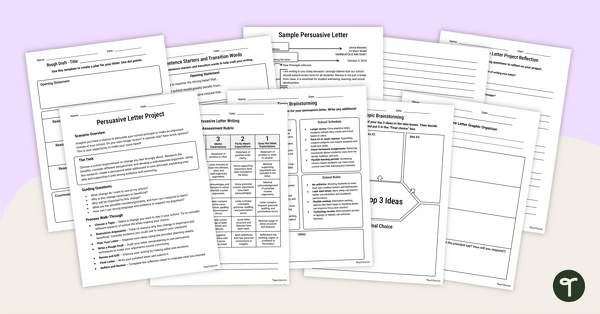
Persuasive Letter Assignment
Use this persuasive letter assignment to guide your students through the process of writing a persuasive letter to their school principal.
- Plus Plan

Plus-Minus-Interesting Chart
Use this Plus-Minus-Interesting Chart set in any subject area to get your students talking!
- Plus Plan

Genre of the Month - Writing Prompt Grids (Upper)
Introduce your students to a variety of writing genres with our printable genre-specific writing prompt grids.
- Plus Plan
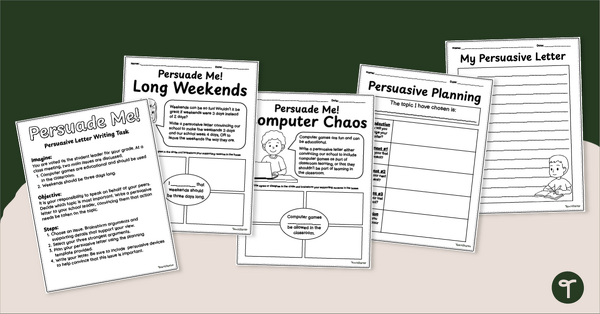
Persuasive Letter Writing Task - 2nd Grade
Improve student composition with an engaging persuasive letter-writing task.
- Plus Plan
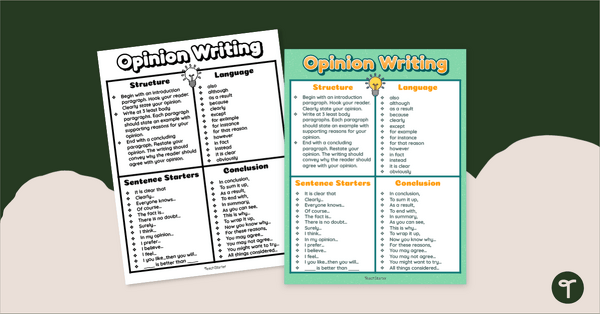
Opinion Writing Anchor Chart
Introduce younger students to the language associated with opinion writing with a printable opinion writing anchor chart.
- Plus Plan

Dogs Make The Best Pets - Reading Comprehension PDF
Assess 3rd grade reading comprehension skills with a printable Reading Comprehension Test using an opinion text.
- Plus Plan
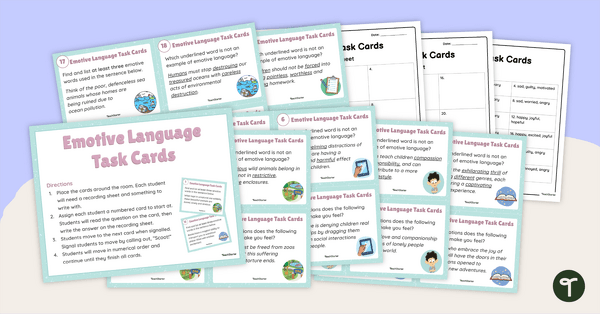
Emotive Language Task Cards
Get students exploring emotive language examples with this set of task cards perfect for your persuasive writing unit.
- Plus Plan
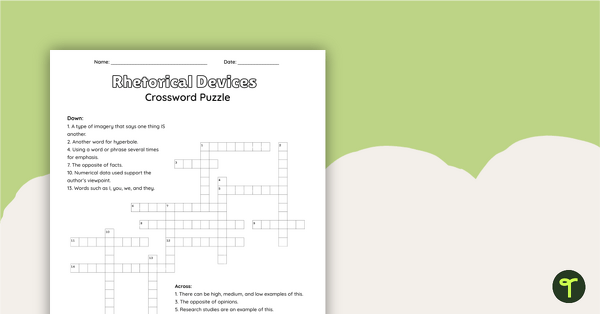
Rhetorical Devices Crossword
Familiarize your students with the most common rhetorical devices with an engaging crossword puzzle.
- Plus Plan
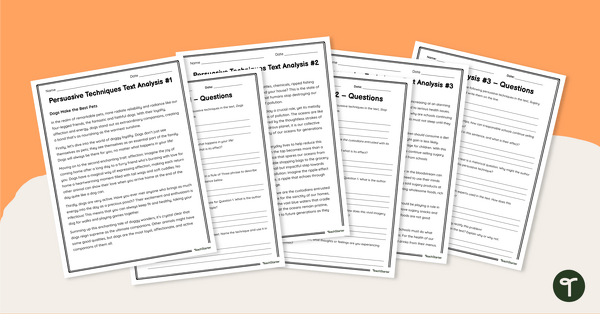
Analyzing Persuasive Techniques Worksheets
Get students analyzing persuasive techniques and their effects on audiences with this set of three texts with accompanying questions.
- Plus Plan
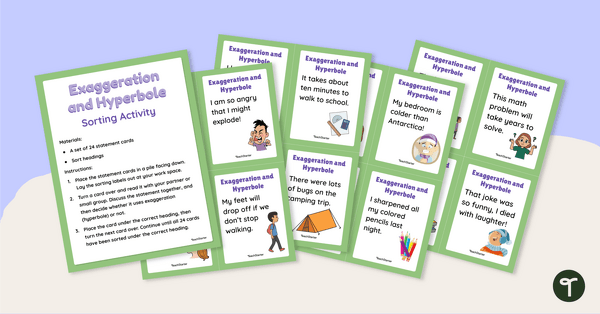
Exaggeration and Hyperbole Sorting Activity
Explore examples of hyperbole with your students using this set of 24 sorting cards perfect for your reading centers.
- Plus Plan

Exaggeration and Hyperbole Interactive Activity
Explore hyperbole examples with your students using this digital game perfect for lesson warm-ups or lesson wrap-ups.
- Plus Plan
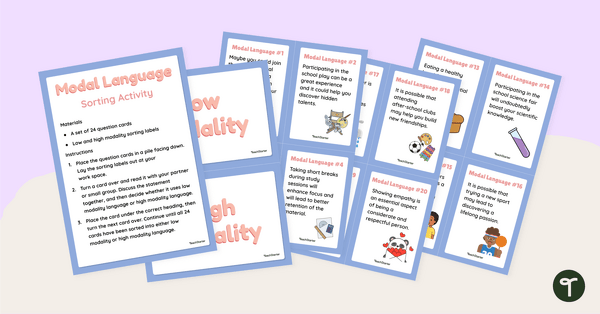
Modal Language Sorting Activity
Explore examples of modal language with your students using this set of 24 sorting cards perfect for your persuasive writing unit.
- Plus Plan
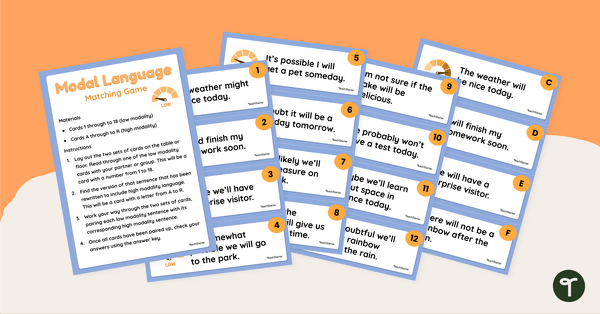
Modal Language Matching Activity
Have students explore high modality and low modality language with this matching game to use during your persuasive writing unit.
- Plus Plan
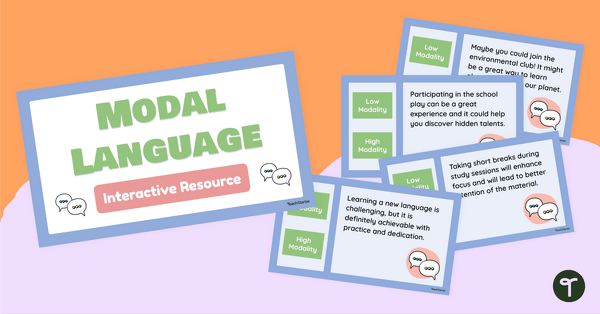
Modal Language Interactive Activity
Explore the language of modality with your students using this digital game perfect for your persuasive writing lessons.
- Plus Plan
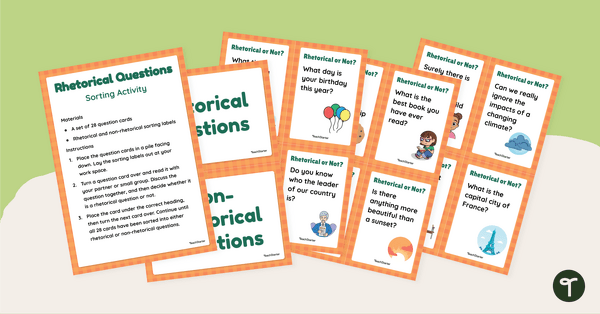
Rhetorical Questions Sorting Activity
Explore examples of rhetorical questions with your students using this set of 28 sorting cards perfect for reading centers.
- Plus Plan
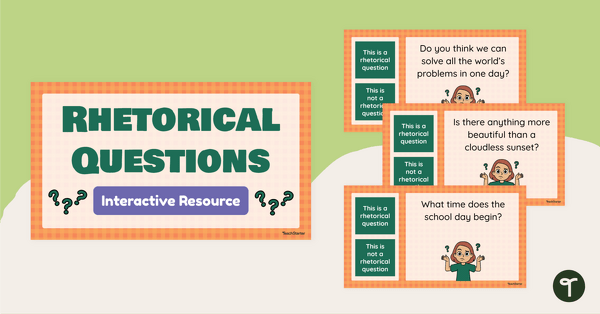
Rhetorical Questions Interactive Activity
Explore rhetorical questions with your students using this digital game perfect for your persuasive writing lessons.
- Plus Plan
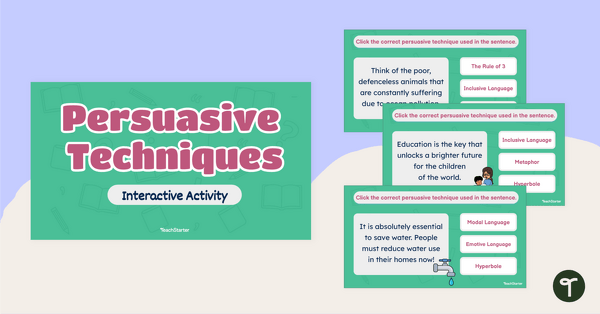
Persuasive Techniques Interactive Activity
Explore persuasive technique examples with your students using this digital game perfect for your persuasive writing lessons.
- Plus Plan

List of Rhetorical Devices
Download this list of rhetorical devices for your students to refer to when writing a persuasive essay.
- Plus Plan
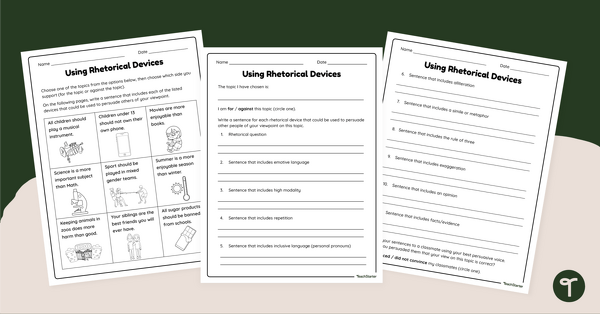
Using Rhetorical Devices Worksheet
Use this rhetorical devices worksheet to help your students create rhetorical device examples based on a specific topic.
- Plus Plan
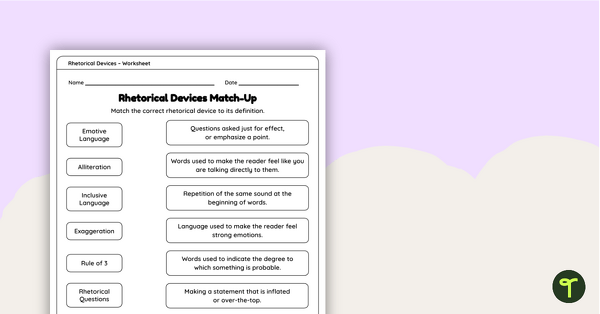
Rhetorical Device Definitions – Match-Up Worksheet
Have students match the rhetorical devices with their definitions using this simple one-page worksheet.
- Plus Plan
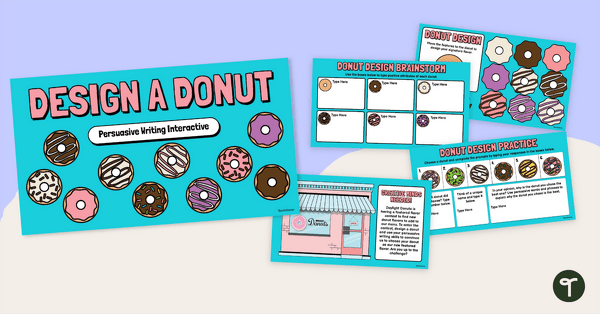
Design a Donut Persuasive Writing Interactive
Explore persuasive writing with this fun donut-themed interactive activity.
- Plus Plan
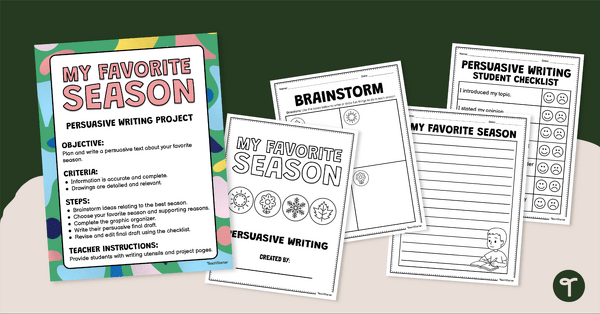
Persuasive Writing Project (My Favorite Season)
Explore persuasive writing with this persuasive writing project focusing on a student’s favorite season.
- Plus Plan
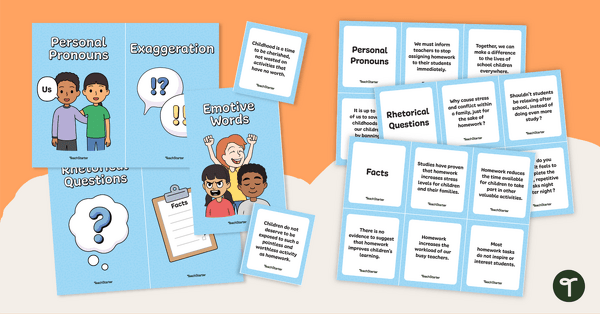
Rhetorical Devices Sorting Activity
Explore rhetorical devices with your students using this set of sorting cards.